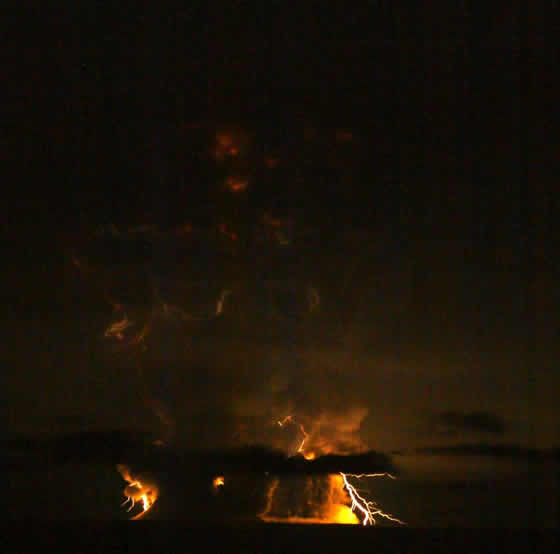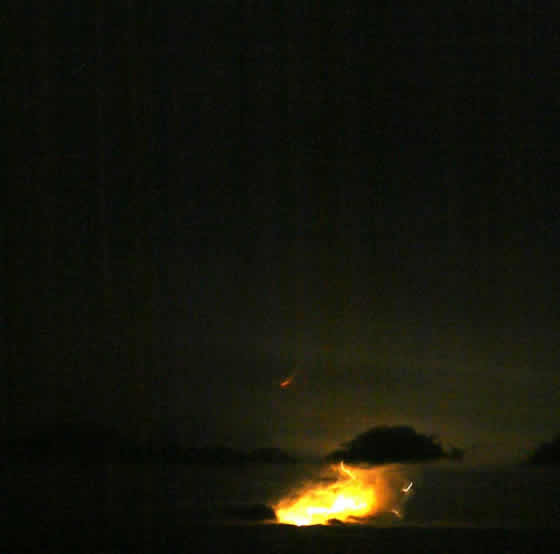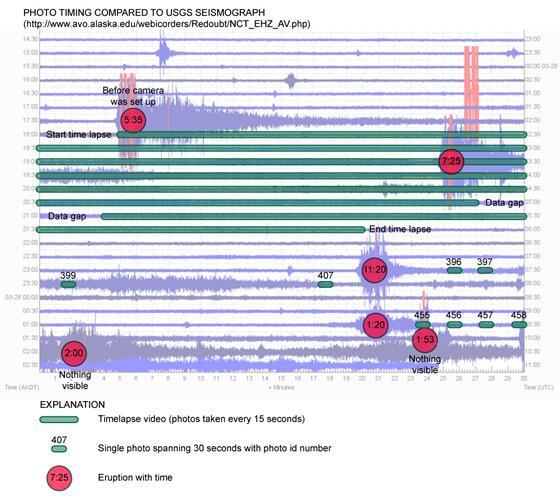 |
| Lightning in the ash cloud from the 11:20 PM March eruption at 11:26. Photo by Bretwood Higman |
These photos of lightning in a volcanic ash cloud from Redoubt Volcano were taken by Bretwood Higman. The camera was mounted under the yurt where he lives in Seldovia, Alaska, and was set to automatically take a 30 second photo every two minutes. Seldovia is 80 miles from the volcano, on the far side of Cook Inlet. Two eruptions are captured in the photos, the first at 11:20 pm on March 27, and the second two hours later. The camera, a Canon Digital Rebel XTi with a Canon 70-200mm L lens, was only barely able to resolve the eruption cloud illuminated by the lightning, which is why the images appear noisy.

For both of these eruptions, the lightning did not begin until several minutes after the explosion began. How lightning forms in general is still debated among scientists, and volcanic lightning is even less well understood. What is mostly agreed upon is that the process starts when particles separate, either after a collision or when a larger particle breaks in two. Then some difference in the aerodynamics of these particles causes the positively charged particles to be systematically separated from the negatively charged particles. Lightning is the electrical flow that results when this charge separation becomes too great for air to resist the flow of electricity. Some of the lighting strokes in these photos are at least 2 miles long, so the separation of charged particles must occur on this scale.
 |
| Lightning in the as cloud from the 11:20 PM March 27 eruption at 11:28 PM. Photo by Bretwood Higman. |
 |
| Lightning in the ash cloud from the 11:20 PM March 27 eruption at 11:32 PM. Photo by Bretwood Higman. |
Wasalam.





No comments:
Post a Comment